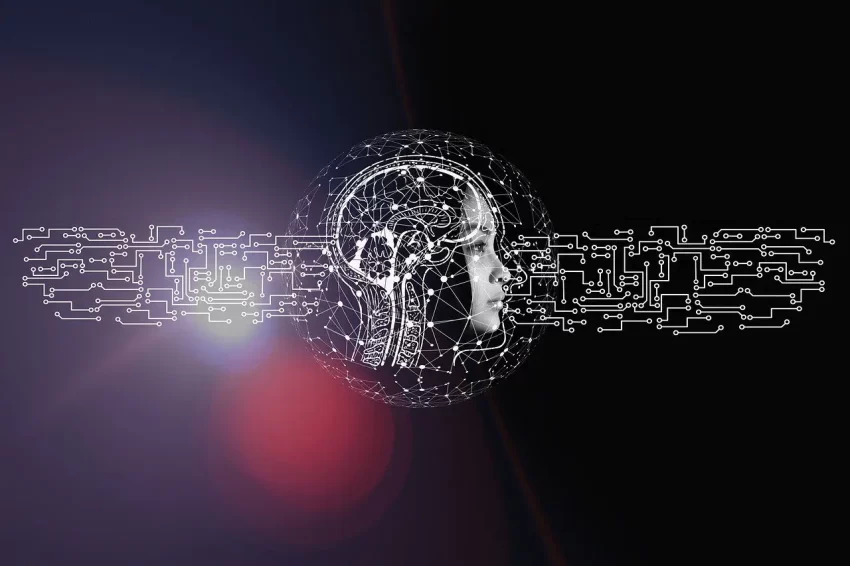Narrow AI and Artificial General Intelligence (AGI) are two significant elements within the field of Artificial Intelligence. Both of these AI types vary in several ways. In this blog post, we will explore the difference between AGI and narrow AI.
What is Narrow AI?
Narrow AI is also known as weak AI designed to execute a specific task. Narrow AI relies on machine learning algorithms that are trained on large sets of data.
Followings are different kinds of tasks that narrow AI can accomplish
- Image recognition
- Speech recognition
- Text translation
- Recommendation systems
- Virtual Assistants
- Predictive Analytics
Narrow AI can perform these tasks accurately and quickly. However, it can only perform the tasks for which it has been specifically trained. Additionally, the narrow AI lacks reasoning and understanding of the context.
Even though lacking adaptability, narrow AU can remarkably perform the tasks that demand high efficiency and speed.
SEE ALSO – HOW TO UTILIZE GENERATIVE AI IN DIGITAL MARKETING
What is Artificial General Intelligence or AGI?
Artificial general intelligence is a theoretical form of AI that has the capability to learn, understand, and apply knowledge to accomplish various tasks, matching human capabilities.
Similar to humans, AGI is capable of adapting to a new environment or tasks through continuous learning and logical reasoning. This flexibility of AGI enables it to accomplish a wide range of tasks across diverse industries.
Followings are different kinds of tasks that narrow AI can accomplish
- Problem-solving and informed decision-making
- Continuous learning and adaptation.
- Creativity
- Personalization
- Recommendations
- Creating strategies
- Natural language understanding
Key differences Between AGI and Narrow AI
1. Understanding the Differences In Scope And Versatility
Narrow AI is designed to complete specific tasks. Compared to humans, narrow AI systems can complete tasks quickly and more efficiently. These AI systems depend on the machine learning algorithms they have been trained on.
Therefore, Narrow AI systems are incapable of executing any task beyond their training. These systems can’t adapt to any task that is beyond their learned skills.
On the other hand, Artificial general intelligence possesses human-like intellectual behavior, meaning this AI system can learn and adapt to new tasks and situations. AGI is a conceptual AI system. With its capability for logical reasoning and understanding, AGI can complete a wide range of tasks compared to narrow AI.
SEE ALSO – 10 KEY WAYS AI CHATBOTS CAN IMPROVE CUSTOMER EXPERIENCE
2. Learning and Adaptability
Narrow AI systems can’t learn on their own. These AI systems follow predefined algorithms to execute specific tasks. So narrow AI systems can’t perform tasks beyond their training data.
On the other hand, Artificial general intelligence is theoretically developed to learn by itself. These AI systems have the capability to learn and adapt to new tasks and situations.
The ability to learn continuously enables AGI to consistently improve its performance and capabilities. In this way, AGI can execute a comprehensive range of tasks across various fields.
3. Decision Making
Narrow AI systems cannot make independent decisions. These AI systems simply follow the trained data and rules to complete a specific set of tasks.
On the contrary, Artificial General intelligence is a theoretical pursuit of designing AI systems that can make independent decisions. The self-teaching capability of AGI enables the system to handle new tasks and situations even without human intervention.
4. Problem-solving and reasoning
The narrow AI system can’t reason abstractly or understand the context as it follows predefined algorithms and rules. On the other hand, Artificial general intelligence excels in identifying patterns and connections between pieces of information.
This efficient analysis of information and application of logical reasoning enables AGi to get a clear understanding of the problem and provide solutions to complex problems.
AGI also possesses contextual understanding, enabling it to find the solution that is well suited to specific circumstances.
SEE ALSO – 7 INTERESTING THINGS YOU NEED TO KNOW ABOUT META AI CHATBOT
5. Generalization
Narrow artificial intelligence follows predetermined rules to complete specific tasks. These AI systems can’t use knowledge and skills learned from one context to solve a problem in an entirely different scenario.
Conversely, Artificial general intelligence can utilize the knowledge gained from one task in an entirely different task. This generalization of knowledge by AGI empowers it to solve complex issues effectively.
6. Handling Complex Tasks
Narrow AI systems can handle any task which it has been well-trained for, especially well-defined tasks. However, these AI systems can’t handle tasks beyond the range of trained data.
On the other hand, With logical reasoning, adaptability, and a detailed understanding, AGI can efficiently solve complex problems. Additionally, AGI has the capability to learn from each problem it handles and can apply knowledge gained from one task to another.
7. Flexibility
Narrow AI systems can efficiently handle any tasks within their trained field. These AI systems are incapable of handling tasks that demand high levels of logical reasoning, understanding of context, and adaptability.
Unlike narrow AI, Artificial General Intelligence systems are flexible. The learning algorithms within the AGI system empower them to recognize the patterns and gain insights from the data. Then, the AGI system develops internal models and gains new insights.
This flexibility enables Artificial General Intelligence to handle a diverse range of complex problems effectively.
